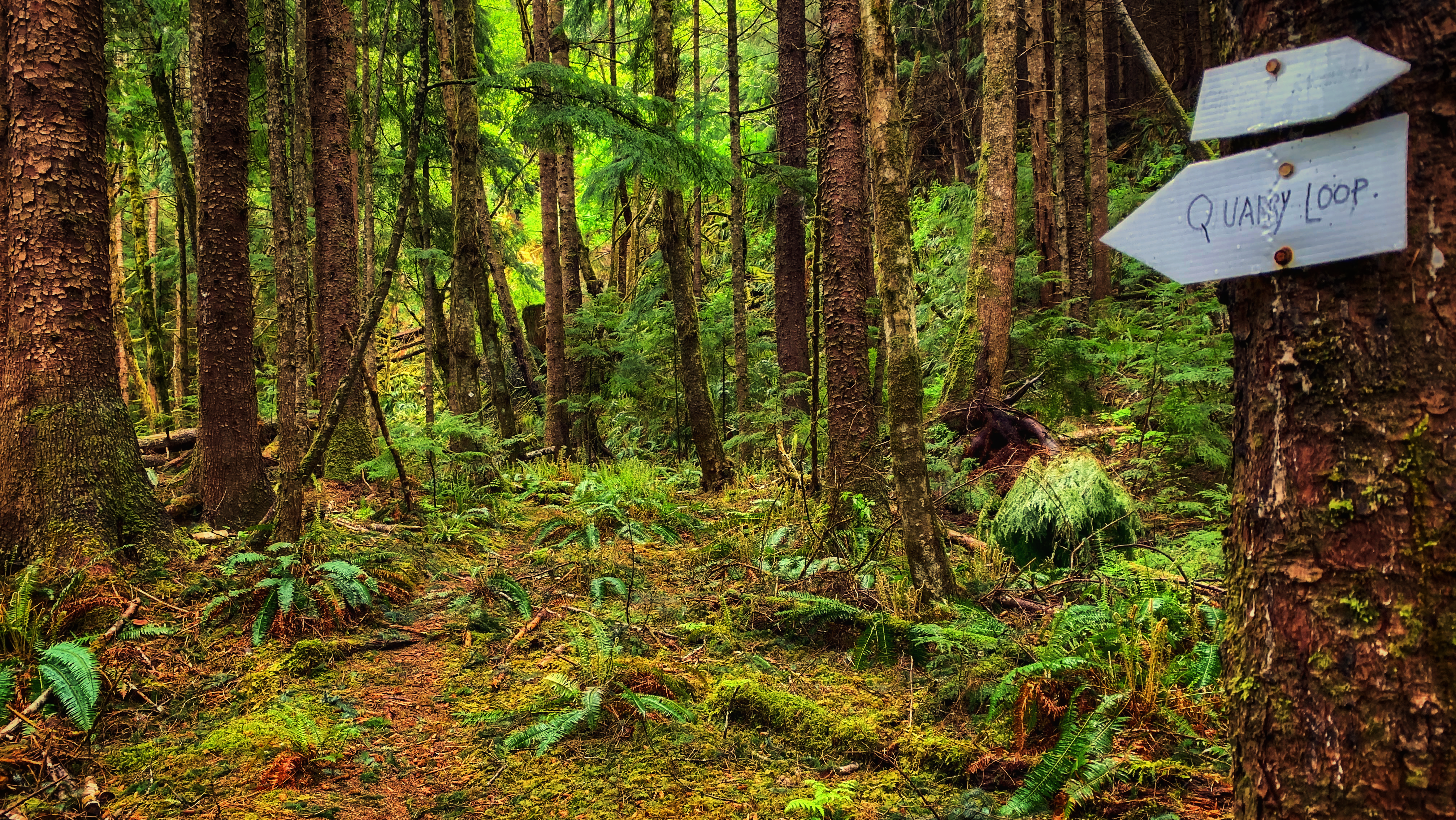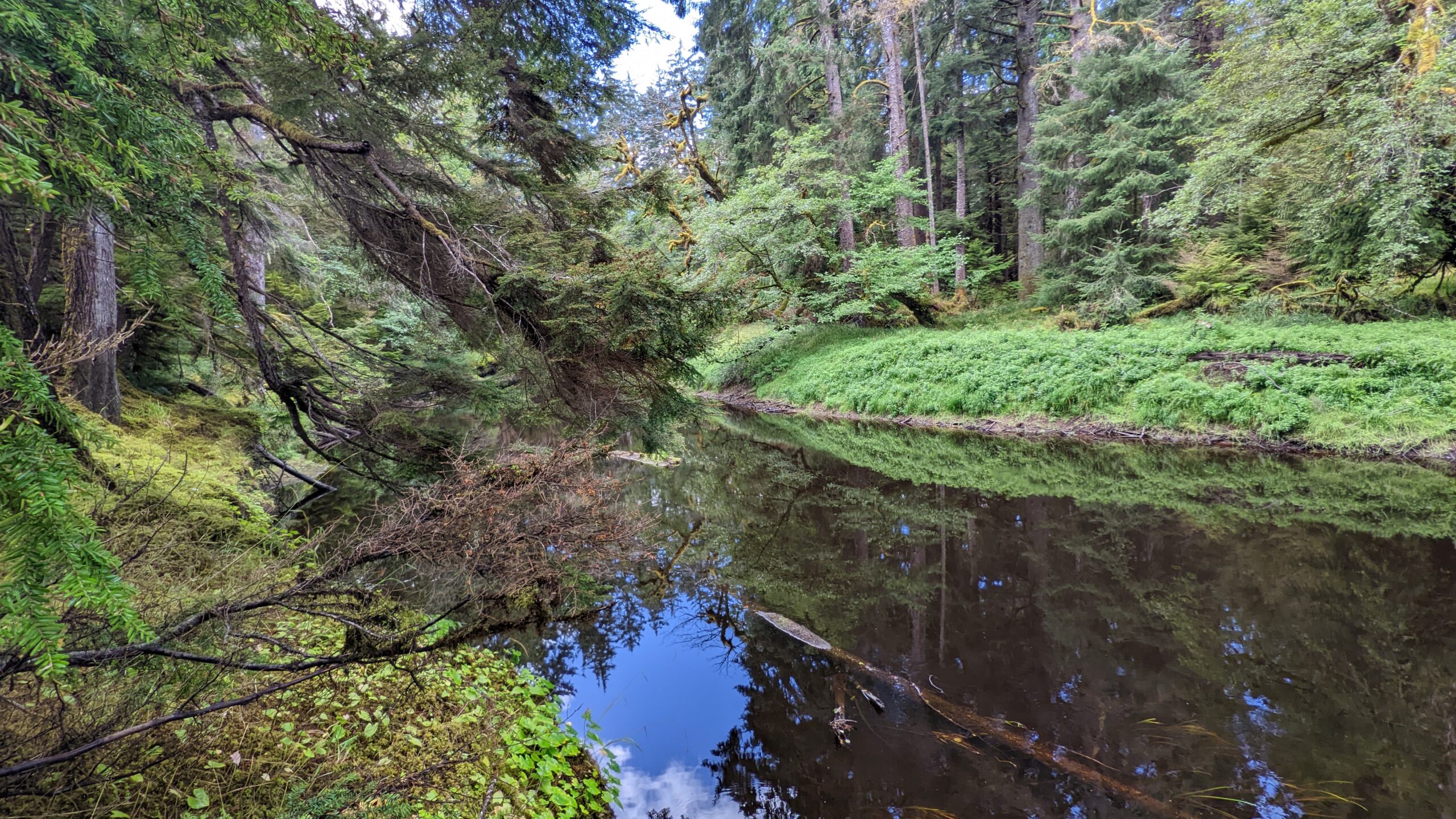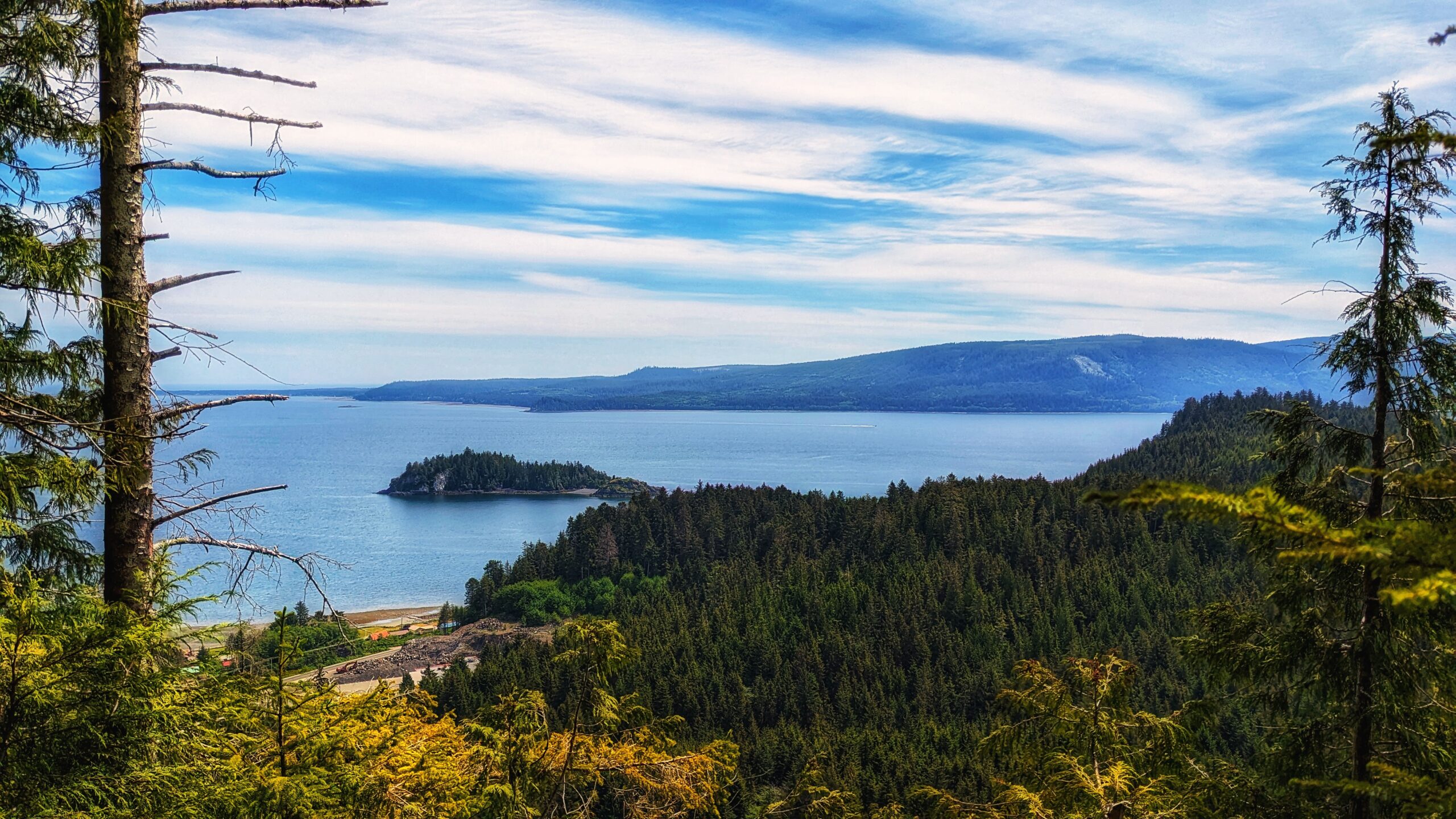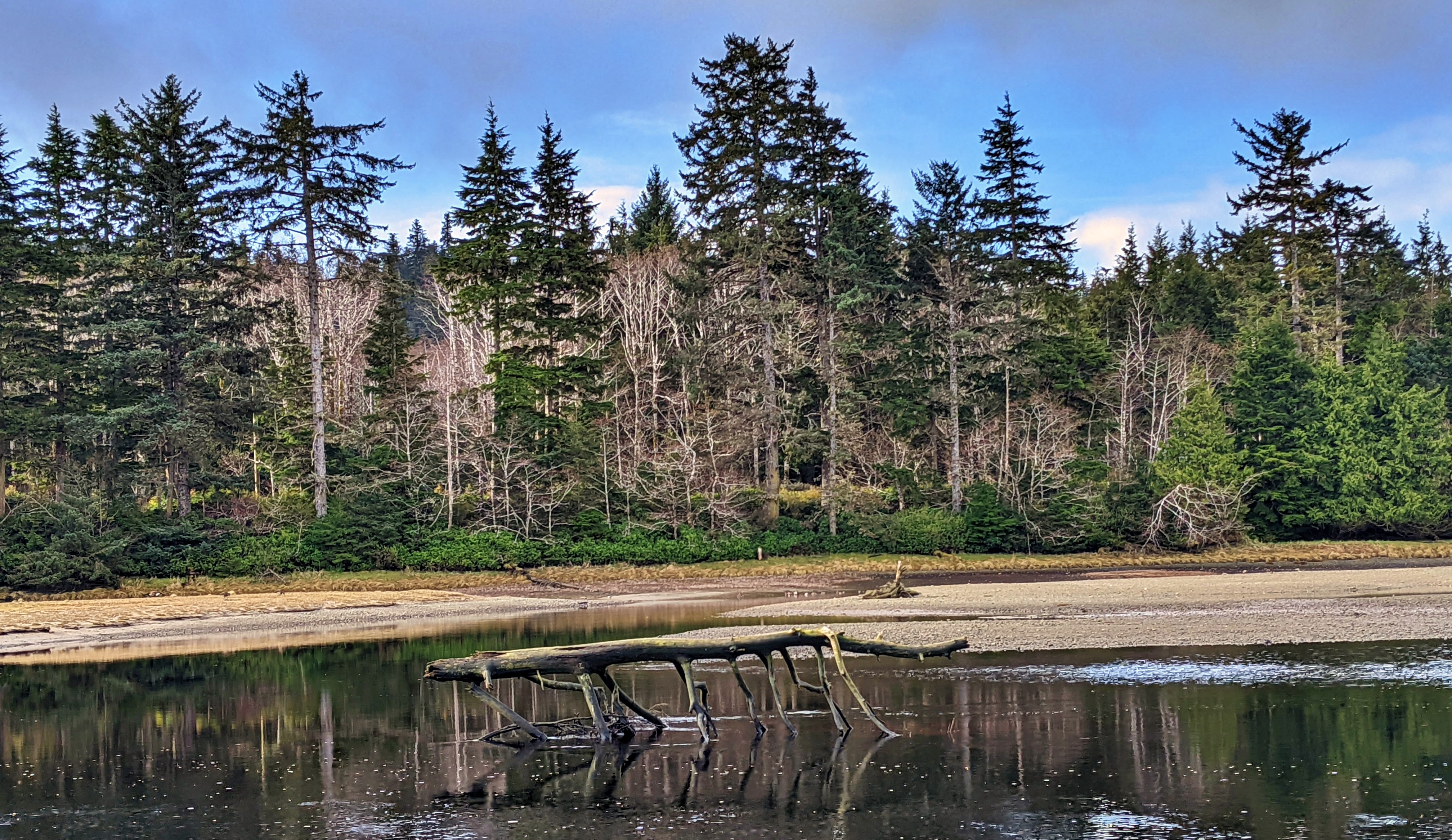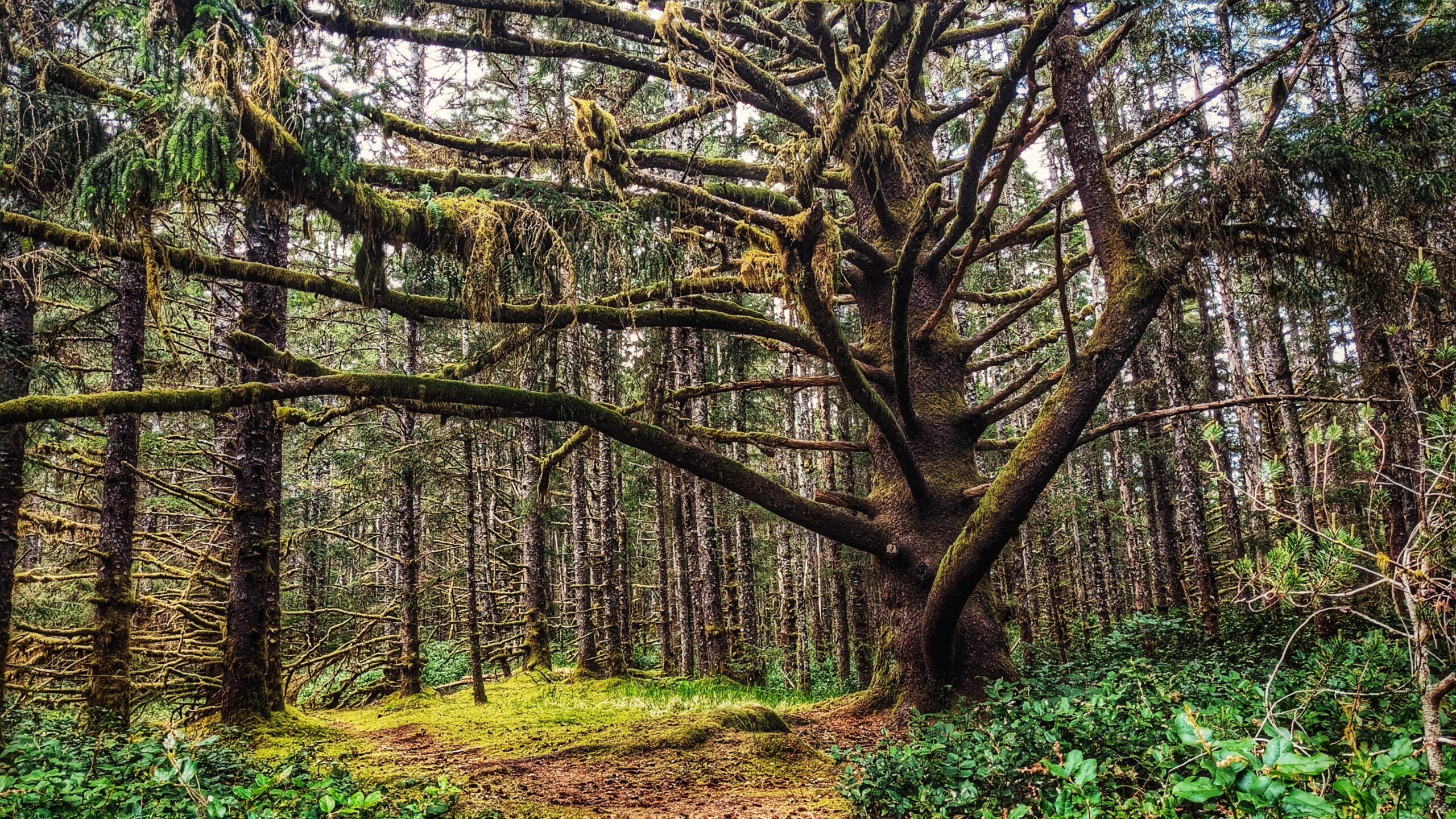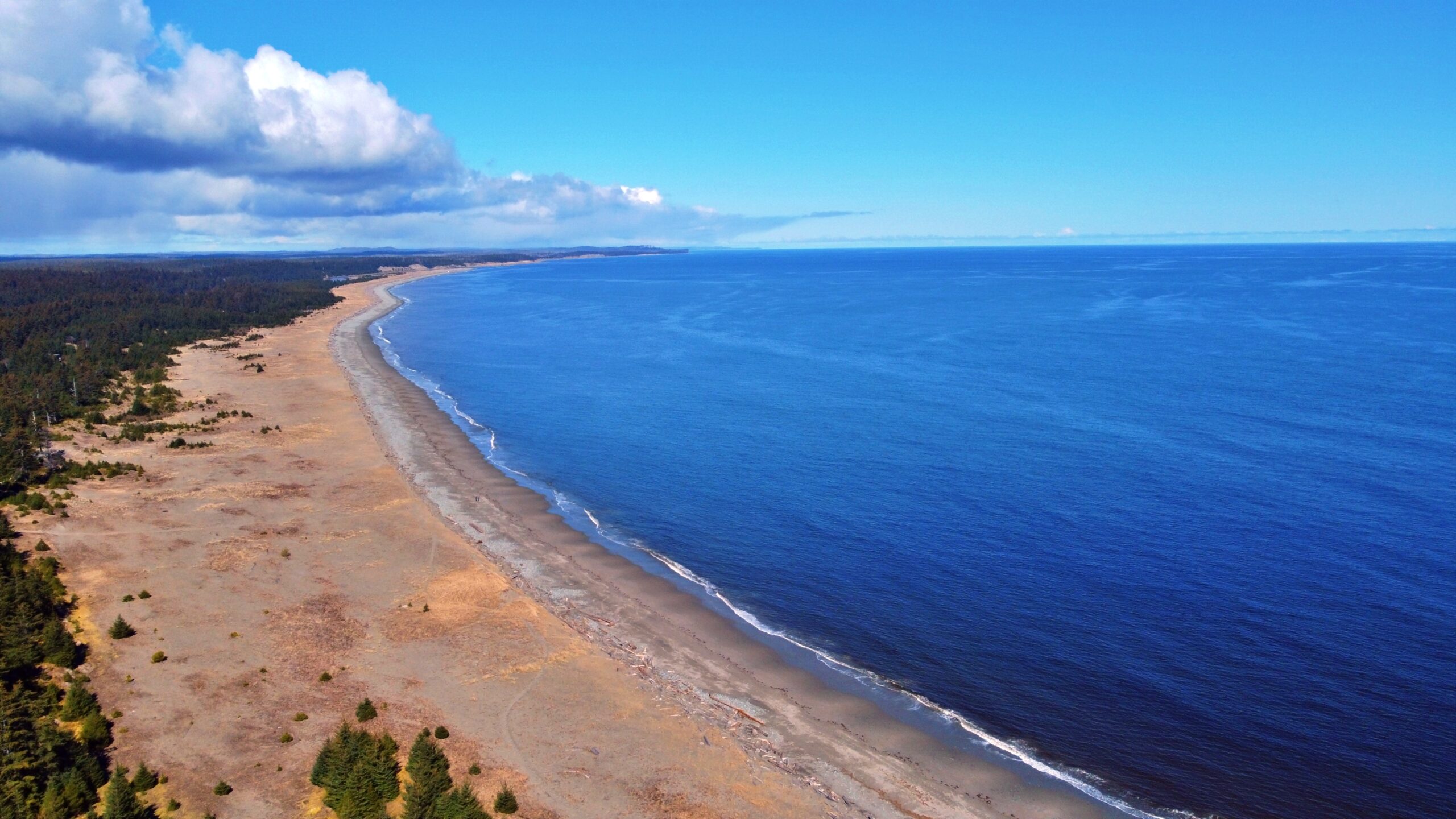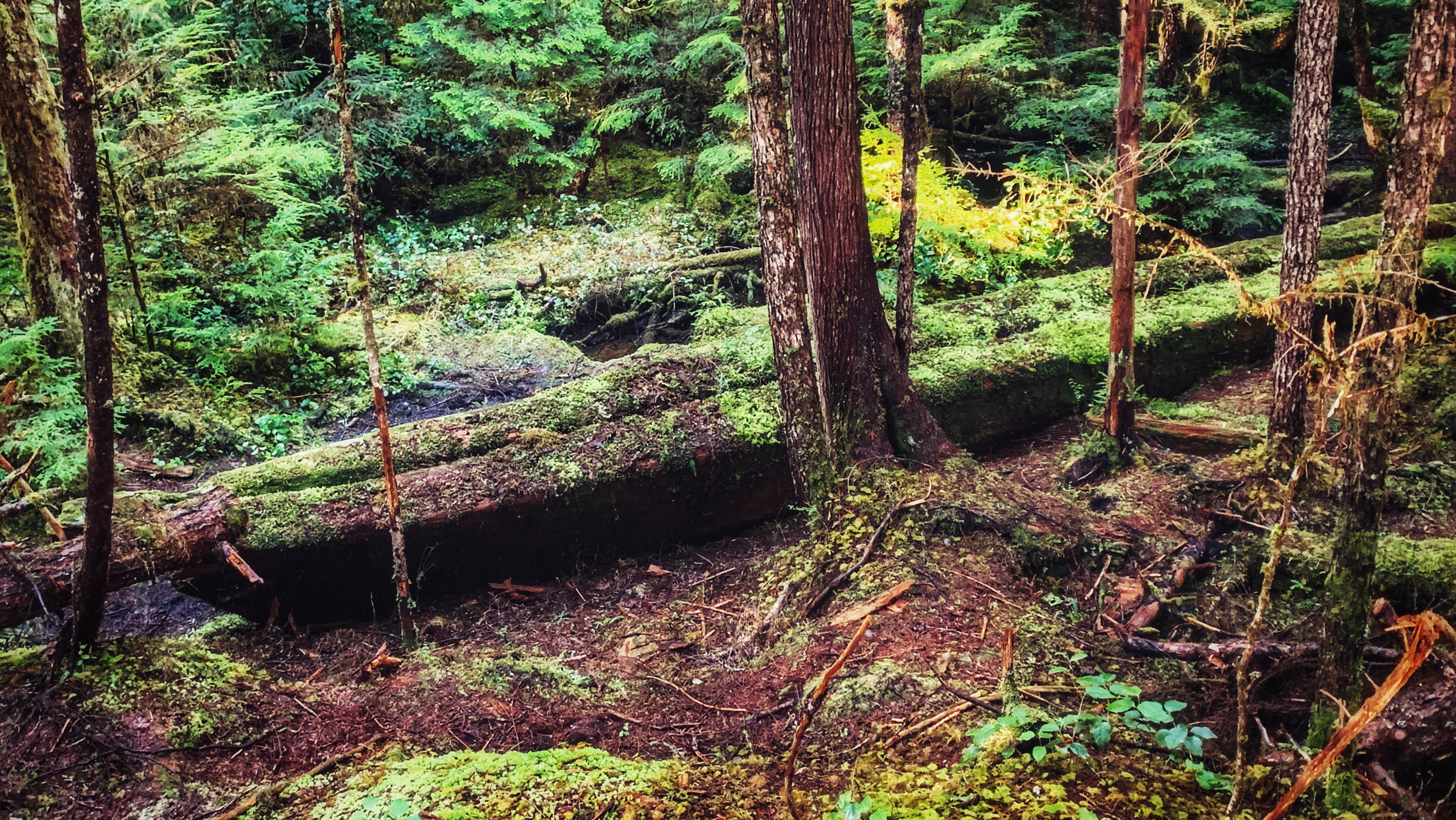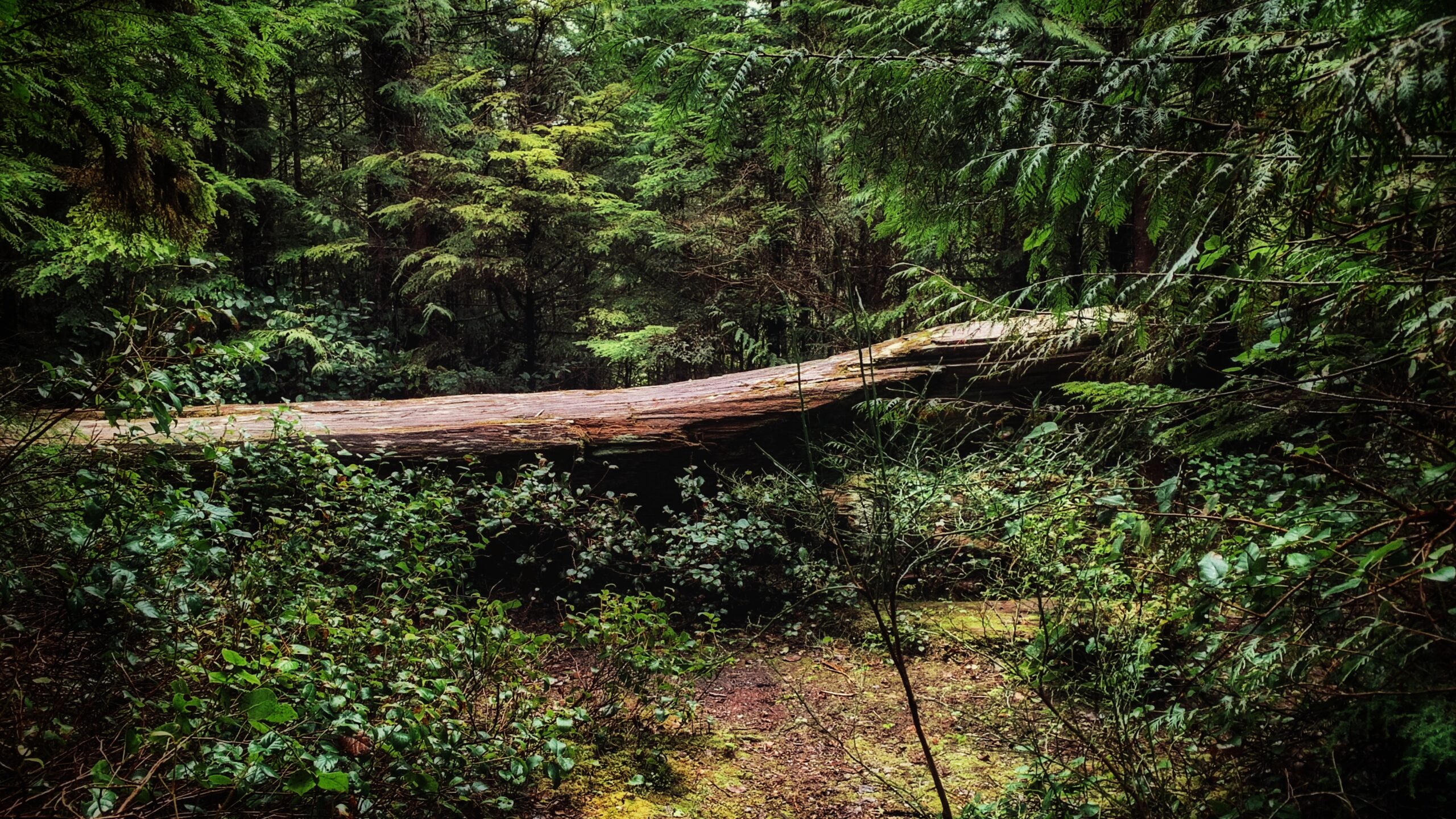The “Around the Pond Trail” is easily missed. It isn’t mentioned in any of the sparse trail literature on Haida Gwaii (published or online), nor is it mentioned on the popular Backroad Mapbooks. As such, people find this trail by accident or learn about it from a helpful local. Where is this fabled trail?
Category: Recreational/ Interpretative
For those wishing to access the lower Tlell River and experience the old growth “alley” in a more expedient way and manner, then the northern entrance is the most convenient. To access this trailhead, turn up the short dirt road indicated by Tlell “Farmers Market” signage and then park your vehicle at the nearby soccer fields, just behind the Tlell Fire Hall.
Some 11 years later, the trail is little-known and most hikers walk right on by without even realizing it’s there. I suppose that’s understandable because there is no trailhead marker denoting the route – there’s just some subtle flagging tape off to the side that’s very easy to miss.
The Sangan River Trail is perhaps better described as a river walk than an actual trail. There is no formal trailhead, nor trail markers denoting the route; however, it is very easy to find and represents a peaceful walk – one that allows you to disconnect from the wired world and re-connect with nature and the elements. To access the Sangan River Trail, drive 10-minutes outside of Masset until you come upon the Sangan River Bridge
Located approximately 5 minutes north of Skidegate by car, you’ll find Chinukundl Creek, more popularly known as Miller Creek. Just up from the bridge, you’ll also spy Chinukundl Road. Turning up the road will take you into the informal community known as Miller Creek.
Susan’s Trail is unmarked, but its location is familiar: As you drive in towards the Misty Meadows campsite you will inevitably spy “the big tree” to your left. This marks the start, or trailhead, of Susan’s Trail. You can park your car on the side of the road or drive a couple of hundred meters forward to the campsite and park there before beginning your hike.
From a recreational perspective, Misty Meadows Beach Loop Trail serves as a nice introduction to the wonders of Naikoon Provincial Park. It offers beach access and some nice hiking.
The Spit Walk can be accessed at two major points – along Tacan Road or Beach Road. If you want to do this hike, we’d recommend starting at Beach Road adjacent to Lon Sharp’s “Spirit of Sandspit” (giant salmon) sculpture because there’s parking available at the site of the former government wharf.
This trail technically doesn’t have a name but, because it leads to another ancient Haida Canoe, the tendency has just been to call it “Haida Canoe Trail #2” – an interesting name choice since you actually come upon its trailhead BEFORE the “Haida Canoe Trail” that most everyone visits.
The Haida Canoe Trail is roughly 8km past the Golden Spruce Trail, along the Port Man Forest Service Road. You will notice a large sign that says “HAIDA CANOE” on the left side of the road, at the “Y” before the Port Man turns into the QC Mainline. The sign is impossible to miss and it points you in the direction of the ancient Haida canoe.

